|
Called the ‘Goshintai’ or the ‘Tai’you-ishi’ meaning the ‘sun stone’, this hexagonal megalith is placed on a flat, 50 ft. square-shaped platform, at a depth of around 80 feet or so underwater on the sea floor.
There are ‘scale-like markings’ carved onto the platform which may have been used to assist with measurements by the builders of long, long ago.
This massive megalith obviously did not get there by accident, and would have been impossible to have been placed there so accurately when the site was already submerged underwater.
a similar megalithic structure can be seen, but on dry land
above sea-level on the island of Kume-jima.
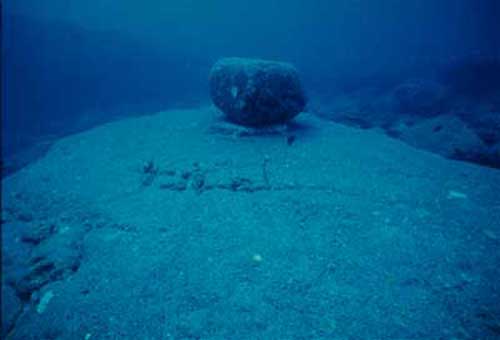
Dr. Masaaki Kimura
—
Okinawa, Japan
—
In an area that is some 550 yards to the southeast of the ‘No.1 Monument’ at Iseki Point, and at a depth of between 65 and 115 feet, is an ‘open space’ with nothing in it that has been ‘carved’ completely flat.
As can be seen from the image and diagram below, this oddly-shaped ‘structure’ that has been named the ‘stadium’ by Professor Kimura and his Research team, measures about 80m (265 feet) in two directions.
It is surrounded by ‘flight-of-steps’-like structures which resemble the sort of seats that audiences would sit on in an amphitheatre .
In one corner there are various-sized megaliths that are standing like ‘domino pieces’, and they may be the remains of the focal point for the whole area of the ‘Stadium’; somewhere that may have been designed with ‘acoustic’ qualities in mind – perhaps the spot from where meetings were addressed, or maybe a focal aea where rituals were performed.
Whatever the original function of this ‘Stadium’ was, it could only have happened when this particular seabed area was last above sea-level which several investigators have suggested was around 10,000 years ago.
|
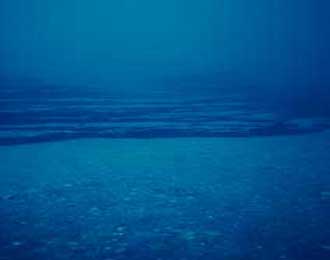
Dr. Masaaki Kimura
—
Okinawa, Japan
—
|
|
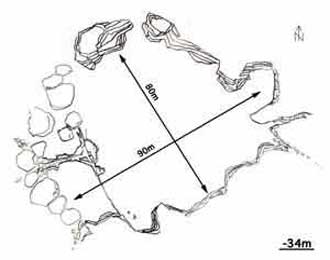
Dr. Masaaki Kimura
—
Okinawa, Japan
—
|
Outside the ‘Stadium’ there are ‘pathways’ which seem to be ‘corridors’, and there are also a number of entranceways to the open space.
There are well-shaped steps in the pathways, and on both sides of them there are features that look very much like ‘drainage gutters’.
How anyone could possibly believe that these could have been formed solely by ‘natural processes’ after diving to these particluar features is something that to any rational, open-minded observer beggars belief.
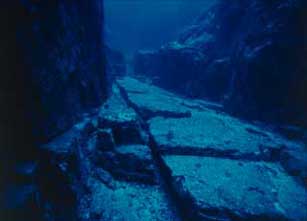
Dr. Masaaki Kimura
—
Okinawa, Japan
—
These images, from what after more that ten years of diving on these structures must now be a ‘paradigm-busting’ archive built up by Professor Kimura, more than demonstrate the soundness of his long-held belief that, at Iseki Point, Yonaguni-jima, we are seeing the very definite remains of an ancient civilisation.
Surely this complex of assorted structures laid out on the seabed should be prime candidates for ‘World Heritage’ status?
Let us hope that Professor Kimura can generate adequate funding to continue exploring these ancient remains further.
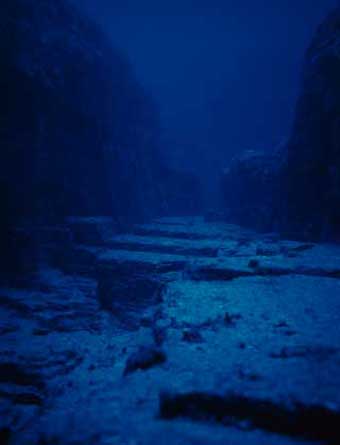
Dr. Masaaki Kimura
—
Okinawa, Japan
—
History’s Mysteries
“Do undersea relics near Okinawa offer proof of a sophisticated civilization during the last ice age?
Archeologists have long believed that civilization as they define it — intelligent, tool-making, monument building, social humans — began about 5,000 years ago.
But submerged beneath the waves near the Japanese island of Yonaguni is evidence that may well overturn that long-held theory.
A small but persuasive number of scholars and scientists have long thought that “advanced” societies may have existed as long as 10,000 years ago.
Their theories, however well reasoned and defended, have been hamstrung by a lack of evidence.
But recent discoveries of man-made artifacts on the Pacific seafloor may well prove to be the smoking gun that will propel this alternative view of civilization to prominence”.
see the evidence with ‘unique underwater footage’
of the various Yonaguni structures in the
‘History Channel’ TV programme
“Japan’s Mysterious Pyramids”
DVD
or
VHS
|